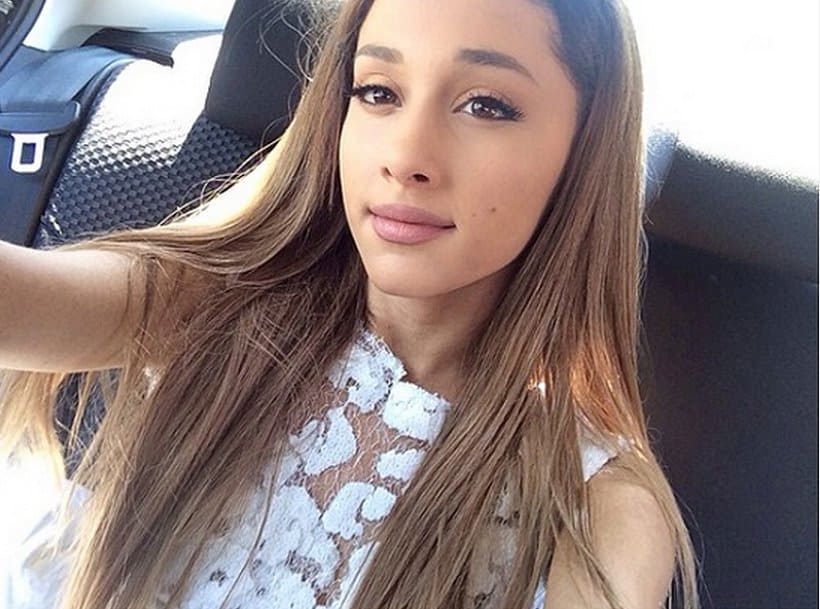Unpacking The Paleseafoam Leak: Privacy, Profit, And Digital Rights
In an increasingly interconnected world, where personal lives often intertwine with public personas, the digital landscape has become a double-edged sword. It offers unprecedented opportunities for connection, creativity, and commerce, yet it also harbors significant risks, particularly concerning privacy. One such incident that has ignited widespread discussion across online communities is the "paleseafoam leak," a stark reminder of the vulnerabilities inherent in our digital existence. This event, centered around a popular social media influencer, has brought to the forefront critical questions about personal boundaries, the ethics of online content consumption, and the very real consequences of privacy breaches in the age of viral information.
The unauthorized sharing of private content, often referred to as "leaks," is a pervasive issue that impacts creators, platforms, and audiences alike. The case of the paleseafoam leak serves as a poignant case study, illustrating not only the mechanics of such breaches but also the profound ripple effects they create. From the immediate shock and distress experienced by the individual to the broader societal debate on digital rights and responsibilities, this incident encapsulates many of the challenges we face in navigating our online lives. This article aims to delve into the phenomenon of the paleseafoam leaked video, examining its origins, how it became viral, and the broader implications of such content in the age of social media virality. It also explores the ethical and legal dimensions surrounding leaked videos and the influence of digital culture on personal privacy.
Table of Contents
- Understanding the Paleseafoam Phenomenon: A Digital Persona Under Scrutiny
- The Anatomy of a Breach: What Exactly Happened with the Paleseafoam Leaks?
- The Devastating Impact: How Leaks Affect Creators and Their Craft
- Fan Reactions and the Online Drama Sphere
- The Legal Minefield: Ramifications of Sharing Leaked Content
- Beyond the Individual: Broader Implications for Digital Privacy and Security
- Navigating the Aftermath: Supporting Creators and Fostering a Safer Online Space
Understanding the Paleseafoam Phenomenon: A Digital Persona Under Scrutiny
To fully grasp the magnitude of the paleseafoam leak, it's essential to understand the context of modern content creation and the role of influencers in the digital economy. While "Paleseafoam" is presented here as a representative case study, it embodies the archetype of a digital creator who has cultivated a significant following through platforms like OnlyFans and other social media channels. These creators often build their brand around a blend of personal authenticity and curated content, establishing a unique bond with their audience. The latest posts from @pseafoam, along with access points like paleseafoam's linktree, illustrate the multifaceted presence creators maintain across the web, offering various forms of engagement and exclusive content. The rise of platforms like OnlyFans has democratized content creation, allowing individuals to monetize their work directly from their audience, often in niches that traditional media might not cater to. This direct creator-to-fan model fosters a sense of intimacy and exclusivity, which, while beneficial for creators, also comes with inherent vulnerabilities. The very nature of this direct connection means that creators often share aspects of their personal lives, blurring the lines between their public persona and private existence. For illustrative purposes, consider the hypothetical profile of a creator like Paleseafoam:Illustrative Creator Profile: Paleseafoam (Hypothetical)
This profile is for illustrative purposes only to discuss the general characteristics of a digital content creator impacted by a leak.
| Attribute | Description |
|---|---|
| Online Persona Name | Paleseafoam |
| Primary Platforms | OnlyFans, Instagram, TikTok, Twitter |
| Content Niche | Lifestyle, Adult Content, Personal Vlogs |
| Estimated Follower Count (across platforms) | Hundreds of thousands to Millions |
| Estimated Online Presence Duration | Several years (e.g., 3-5 years) |
| Monetization Model | Subscriptions, Pay-Per-View (OnlyFans), Brand Deals |
Such creators invest significant time, effort, and often personal vulnerability into their craft. Their content is their livelihood, and their online reputation is paramount. The trust between creator and audience is a foundational element of their success. When this trust is breached, especially through unauthorized sharing of private content, the repercussions are far-reaching, impacting not just the individual but the entire ecosystem of online content creation.
The Anatomy of a Breach: What Exactly Happened with the Paleseafoam Leaks?
The paleseafoam onlyfans leak involved the unauthorized sharing of sensitive content, including explicit images and videos. This incident is a textbook example of a privacy breach that can devastate an individual's life and career. While the exact details of how the breach occurred are often complex and not fully disclosed, the data suggests that the leak is believed to have occurred when a malicious actor gained access to paleseafoam's OnlyFans account. This could happen through various means, such as phishing attacks, malware, weak passwords, or even insider threats. Once access is gained, the perpetrator can download and disseminate private content, often to illicit sharing sites, forums, or dark web channels. The speed at which such content can spread across the internet is alarming. Within hours, or even minutes, what was once private can become widely available, often accompanied by sensationalized headlines and discussions. The ease of sharing digital content, combined with the anonymity that parts of the internet offer, creates a fertile ground for such breaches to spiral out of control. The initial unauthorized access is just the first step; the subsequent viral spread is what amplifies the damage exponentially. The very nature of the internet, designed for rapid information dissemination, becomes a weapon against the victim in these scenarios.The Devastating Impact: How Leaks Affect Creators and Their Craft
The consequences of a content leak extend far beyond the immediate shock. For creators like Paleseafoam, whose livelihood and public image are intricately linked to their online presence, the impact can be catastrophic. The paleseafoam onlyfans leaks devalues the effort paleseafoam puts into content creation, turning meticulously crafted, often intimate, work into something illicitly consumed and decontextualized.Violating Personal Privacy and Trust
At its core, paleseafoam leaked content is a violation of paleseafoam's personal privacy. This isn't merely about digital files; it's about a fundamental human right to control one's personal information and image. When private moments are exposed without consent, it constitutes a profound breach of trust, not just with the platform or the perpetrator, but with the audience and the broader digital community. The psychological toll on the victim can be immense, leading to feelings of shame, betrayal, anxiety, and even depression. Their sense of safety, both online and offline, is shattered. The incident forces them into an unwanted public spotlight, where their most vulnerable moments are scrutinized and judged by millions. This can lead to withdrawal from public life, loss of income, and severe damage to mental health.Devaluing Content Creation and Livelihoods
Beyond the emotional distress, the financial and professional ramifications are significant. For creators who rely on subscriptions and exclusive content, a leak undermines their entire business model. Why would someone pay for content that is now available for free? This devalues the immense effort, creativity, and resources creators pour into their work. It can lead to a sharp decline in subscribers, loss of advertising revenue, and a tarnished professional reputation. The long-term career prospects of the creator can be severely hampered, forcing them to pivot or even abandon their chosen profession. This financial instability adds another layer of stress to an already traumatic experience, highlighting how deeply intertwined personal privacy and economic well-being are in the digital age.Fan Reactions and the Online Drama Sphere
The paleseafoam onlyfans controversy sparked intense debate across various online platforms, from dedicated fan forums to mainstream social media. Fan reactions to such incidents are complex and varied. On one hand, many loyal fans express outrage and solidarity with the creator, condemning the perpetrators and advocating for the removal of the leaked content. They understand the violation of trust and privacy, often rallying to support the affected individual. However, the nature of online communities also means that curiosity often overrides ethical considerations. Some individuals, driven by morbid curiosity or the desire for "free" content, actively seek out and share the leaked material. This perpetuates the harm and makes it incredibly difficult for the creator to regain control over their narrative or their digital footprint. The incident quickly evolves into a spectacle, fueling online drama and speculation. Discussions about the "truth about paleseafoam's onlyfans controversy," exploring leaked content, fan reactions, and online drama, become trending topics, overshadowing the human element of the victim's suffering. This dynamic highlights a critical challenge: how to balance the public's right to information with an individual's right to privacy in an era where anything can go viral. The popular social media influencer's private moments sparked intense debate, revealing both the best and worst aspects of online community behavior.The Legal Minefield: Ramifications of Sharing Leaked Content
The unauthorized sharing of private content, often referred to as "revenge porn" or non-consensual intimate imagery (NCII), carries significant legal ramifications. While laws vary by jurisdiction, there is a growing global consensus that such acts are illegal and harmful. Individuals who share or even possess leaked content can face severe penalties. In many countries, sharing intimate content without consent is a criminal offense, punishable by fines and imprisonment. These laws aim to protect victims from exploitation and to deter perpetrators. Beyond criminal charges, victims can also pursue civil lawsuits against those who leaked or shared their content, seeking damages for emotional distress, reputational harm, and financial losses. Platforms that fail to act swiftly in removing leaked content might also face legal scrutiny, though their liability often depends on specific regulations like the Digital Millennium Copyright Act (DMCA) in the US, which provides safe harbors for platforms if they respond to takedown requests. The legal landscape is constantly evolving to catch up with technological advancements, but the message is clear: the act of sharing leaked content is not a harmless prank; it is a serious violation with potentially life-altering consequences for both the victim and the perpetrator.Beyond the Individual: Broader Implications for Digital Privacy and Security
The paleseafoam leak is not an isolated incident; it is symptomatic of larger issues concerning digital privacy, cybersecurity, and the ethical responsibilities of individuals and platforms in the online sphere. Discover the latest on the paleseafoam onlyfans leaked controversy, including how it impacts content creators and subscribers, and you begin to see a pattern of vulnerability that affects everyone.The Ethical Quandaries of Digital Consumption
The incident compels us to explore the ethical and legal dimensions surrounding leaked videos and the influence of digital culture on personal privacy. As consumers of online content, we all have a moral obligation to consider the source and nature of the information we encounter. Engaging with leaked content, even out of curiosity, contributes to its virality and perpetuates the harm inflicted upon the victim. It normalizes the violation of privacy and creates a demand for such illicit material. This raises uncomfortable questions about our collective digital ethics: Are we complicit when we view, share, or even passively acknowledge leaked content? How do we foster a culture that respects privacy and condemns exploitation, even in the anonymous corners of the internet?Strengthening Security Measures and Personal Responsibility
The paleseafoam incident also serves as a critical wake-up call for strengthening security measures and emphasizing personal responsibility in protecting one's digital presence. Explore the implications of privacy breaches, security measures, and the ethical concerns surrounding leaked content, and it becomes clear that robust cybersecurity practices are non-negotiable. For creators, this means implementing strong, unique passwords, enabling two-factor authentication (2FA) on all accounts, being wary of phishing attempts, and regularly reviewing privacy settings on platforms. Platforms, in turn, have a responsibility to invest in state-of-the-art security infrastructure, implement proactive monitoring for unauthorized content, and provide clear, accessible mechanisms for reporting and content removal. Beyond individual and platform efforts, digital literacy plays a crucial role. Users need to be educated about the risks of oversharing, the importance of digital hygiene, and the legal and ethical implications of consuming and disseminating unauthorized content. Stay informed on this trending topic and learn how to protect your digital presence in the age of online platforms. This collective effort is vital for creating a safer, more respectful online environment where privacy is not just a concept but a protected right.Navigating the Aftermath: Supporting Creators and Fostering a Safer Online Space
For individuals like Paleseafoam who experience a content leak, the aftermath is a long and arduous journey toward recovery. It involves navigating emotional trauma, legal battles, and the daunting task of reclaiming their narrative. Support systems, both online and offline, are crucial. This includes mental health professionals, legal counsel specializing in cybercrime, and communities of allies who stand against online harassment and privacy violations. From a broader perspective, the paleseafoam leak underscores the urgent need for a more robust framework for digital rights and content governance. This involves: * **Faster Takedown Procedures:** Platforms must implement more efficient and responsive mechanisms for removing unauthorized content. * **Stronger Legal Enforcement:** Law enforcement agencies need the resources and expertise to pursue perpetrators of online privacy violations across borders. * **Public Awareness Campaigns:** Educating the general public about the harms of content leaks and the legal consequences of sharing them is paramount. * **Ethical Consumption:** Fostering a culture where users actively choose not to engage with or share leaked content, understanding that doing so perpetuates harm. Ultimately, the goal is to create an online environment where creators can thrive without fear of exploitation, and where every individual's privacy is respected and protected. The lessons learned from incidents like the paleseafoam leak must drive us towards a more secure, ethical, and empathetic digital future.The "paleseafoam leak" stands as a powerful testament to the fragility of privacy in the digital age. It highlights the profound personal, professional, and psychological toll that unauthorized content sharing inflicts on individuals, particularly content creators who often blur the lines between their public personas and private lives. We've explored how such incidents violate fundamental privacy rights, devalue creative effort, and ignite widespread online drama, all while carrying significant legal ramifications for those involved in the unauthorized dissemination of content.
This incident serves as a critical reminder for everyone navigating the internet: the responsibility for fostering a safer online space rests with all of us. For content creators, it underscores the vital importance of robust cybersecurity practices and platform vigilance. For consumers, it's a call to ethical digital citizenship – to understand the severe consequences of engaging with leaked content and to actively choose to respect individual privacy. By supporting victims, advocating for stronger legal protections, and cultivating a culture of digital empathy, we can collectively work towards an internet where creativity flourishes without the constant threat of exploitation. Let this controversy be a catalyst for change, inspiring greater awareness and action in protecting our digital rights. What are your thoughts on the balance between online transparency and personal privacy? Share your perspective in the comments below.



Detail Author:
- Name : Morton Towne
- Username : ziemann.jasmin
- Email : virgil37@yahoo.com
- Birthdate : 1992-03-19
- Address : 7239 Klein Fields South Josefina, AZ 36657-5423
- Phone : (240) 589-8226
- Company : Larson-Kreiger
- Job : Rotary Drill Operator
- Bio : In inventore omnis vero harum. Officia nemo cupiditate saepe nihil minus qui. Eum autem sit aperiam.
Socials
twitter:
- url : https://twitter.com/kellie_id
- username : kellie_id
- bio : Vitae cumque provident fugit. Eos eos culpa quis laborum consequatur.
- followers : 2222
- following : 2234
facebook:
- url : https://facebook.com/kohlerk
- username : kohlerk
- bio : Sit magnam aliquid incidunt enim omnis voluptas.
- followers : 5589
- following : 1742
instagram:
- url : https://instagram.com/kohler1991
- username : kohler1991
- bio : Non nulla id fugiat mollitia sed suscipit et. Velit architecto non a qui.
- followers : 4692
- following : 1223
linkedin:
- url : https://linkedin.com/in/kohlerk
- username : kohlerk
- bio : Harum explicabo incidunt dolorem et.
- followers : 3705
- following : 334